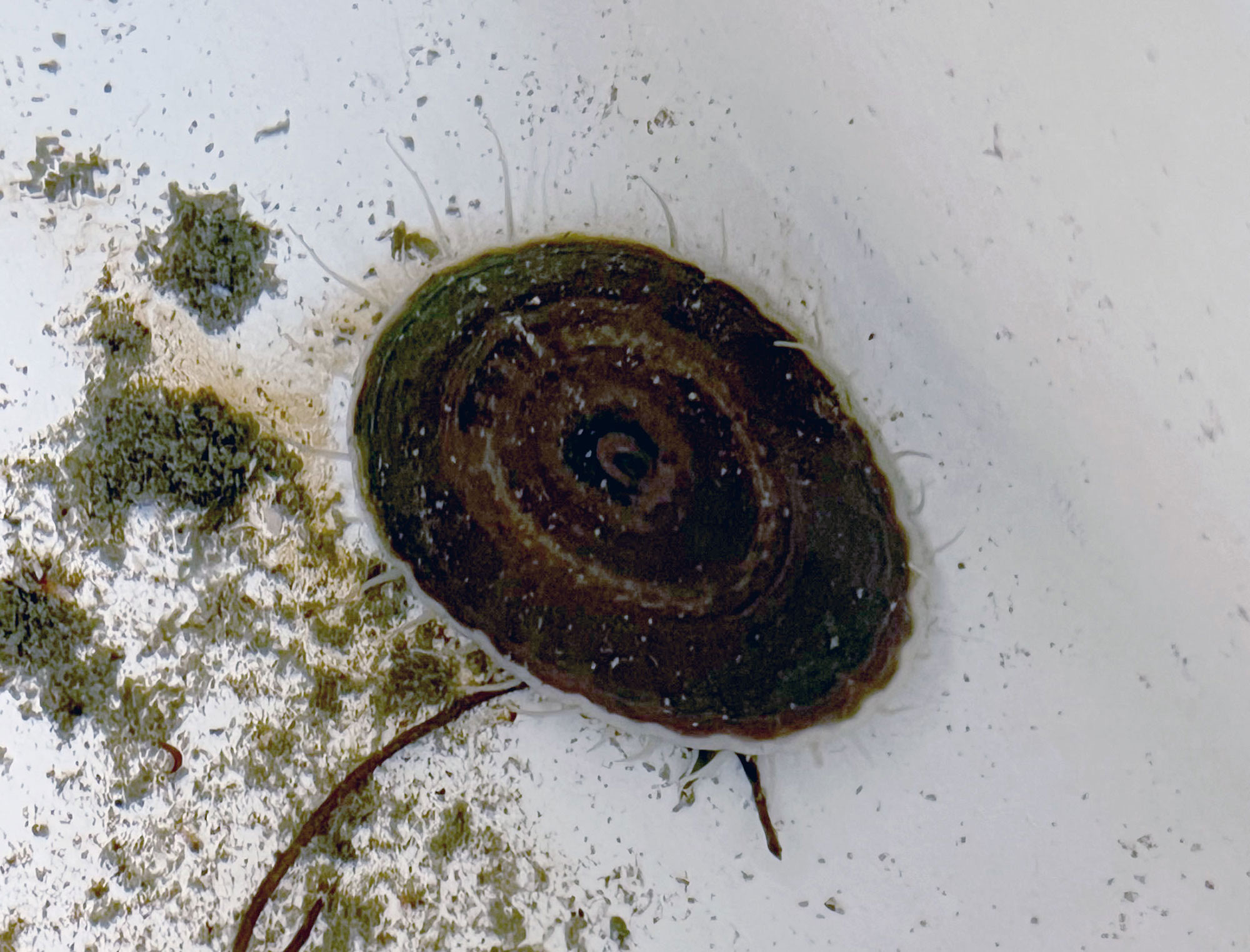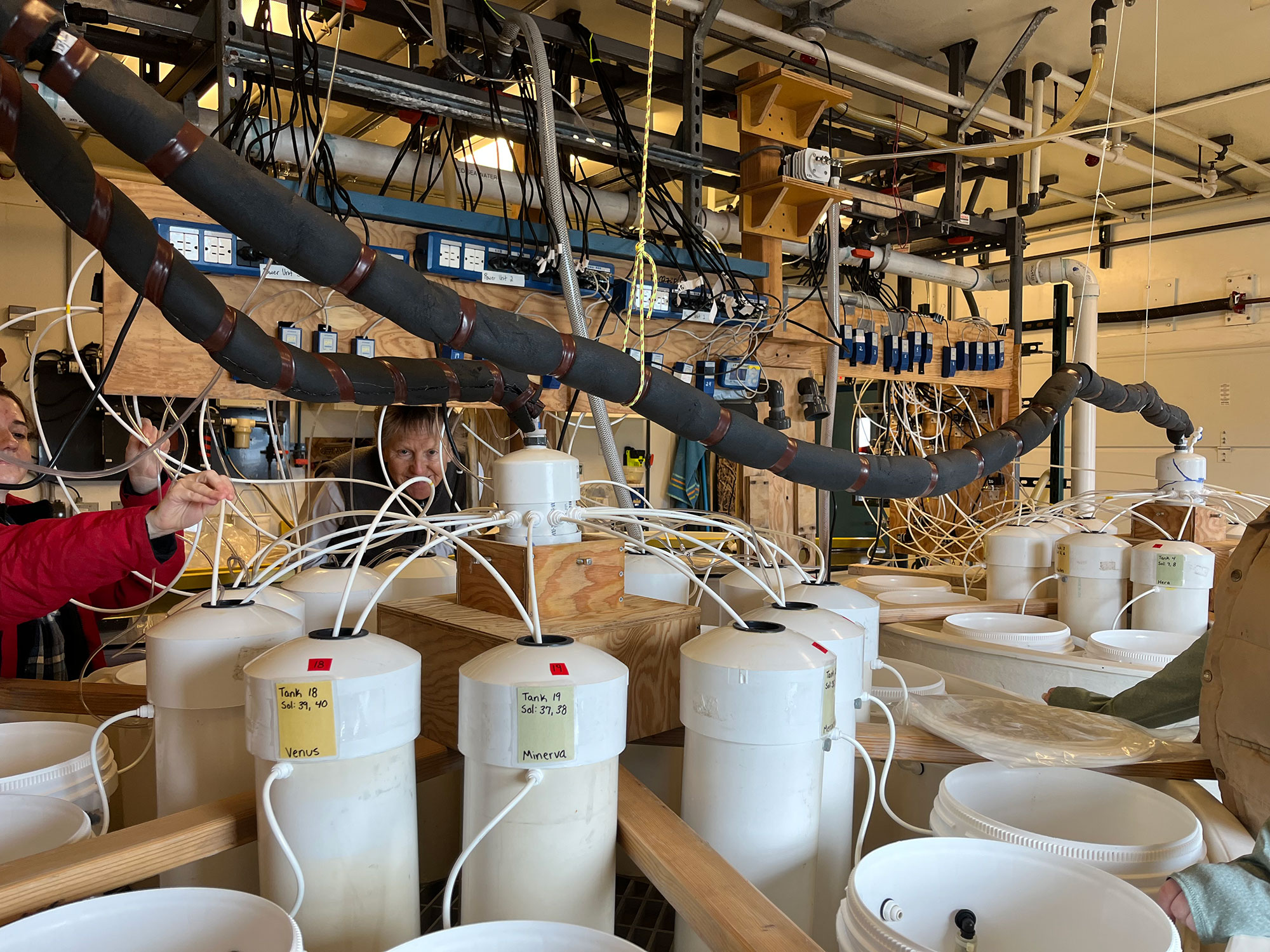 It’s a cold winter’s morning. You sit in the driver’s seat of a car and turn on the engine, giving it a few minutes to warm up before making your morning commute. Perhaps, instead of a car, you are on a bus, train, or plane. In all of these scenarios, you are producing a common thing. Carbon dioxide (CO2).
It’s a cold winter’s morning. You sit in the driver’s seat of a car and turn on the engine, giving it a few minutes to warm up before making your morning commute. Perhaps, instead of a car, you are on a bus, train, or plane. In all of these scenarios, you are producing a common thing. Carbon dioxide (CO2).
You might know that CO2 enters our atmosphere through human and natural sources, but what happens to it after it’s in the air? Some will be taken up by plants and other photosynthetic organisms to convert light energy into sugar, but nearly a third of the CO2 in our atmosphere will enter the ocean. Here, a seemingly simple gas can cause major problems for aquatic life.
Carbon dioxide naturally reacts with water when it enters the ocean or another body of water. This reaction creates carbonic acid which can in turn become bicarbonate and carbonate. The actual compound names are not important to remember. What is important is to understand that each of these compounds can release free hydrogen ions into the water. For those of us who may not remember chemistry class, pH (the measurement of how acidic something is) is determined by the concentration of free hydrogen ions. A higher concentration of hydrogen ions creates more acidic water while a lower concentration creates more basic or alkaline water. To summarize, the more CO2 released into the air, the more CO2 enters the ocean, the more hydrgen ions are released, the more acidic the water becomes. These steps summarize a process called ocean acidification which can be detrimental to some marine life.
To think about this problem in a more human context, do you know why soda is bad for your teeth? To make soda, large amounts of carbon dioxide are dissolved in a sweetened drink to give it its characteristic fizziness. The CO2 also makes the soda acidic because of the chemical reactions described above. The acid eats your tooth enamel, but most people only drink a moderate amount of soda. Imagine if your teeth were soaked in soda 24 hours a day. Now, imagine that your entire skeleton was soaked in acid for the rest of your life.
This is a reality for many marine organisms. Clams, limpets (pictured above), crabs, and amphipods among many other organisms have exoskeletons that protect them from predation and their environment. As the ocean becomes more acidic, the water begins to dissolve their exoskeletons. This means that something like an amphipod, a type of crustacean, would either have to either spend more energy on keeping its exoskeleton intact or survive with less protection.
But not all organisms are created equal. Different species of amphipods are known to have different survivability when exposed to more acidic water. Which brings us to the question of this field season’s experiment: why do some species of amphipod survive comparatively better or worse when exposed to ocean acidification?

Our main experiment this season experiment will consist of collecting four species of amphipods that were categorized as “winners” or “losers” based off of our results from our 2020 expedition. The species will be separated and placed in experimental buckets where they will be exposed to one of three pH treatments the mimic near-future and far-future pH projections. After several months of exposure, we will measure characteristics such as mortality, molting, calcification, and chemical composition to determine why some species fare better than others in our changing oceans.
With that in mind, this post is drawing to a close. However, we still have so much more to discuss about science! Join me next time to get a sneak peak into our experimental setup for this field season.
A haiku for your consideration:
Carbon dioxide
Tasty in a fizzy drink
Bad for calcium